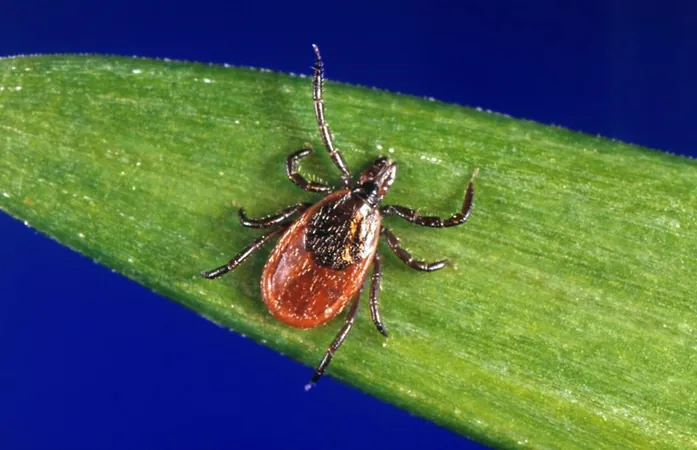
Toronto's Tick Trouble: Fewer Found, But Don't Get Complacent!
2025-05-14
Author: Olivia
Toronto's Risky Tick Situation
Public Health Ontario warns that the entire city of Toronto is now a recognized hotspot for blacklegged ticks, the unwelcome carriers of Lyme disease. With climate change paving the way for an increasing tick population, vigilance is critical.
The Tick Dragging Program
Each fall, the City of Toronto runs a 'tick dragging' surveillance program to monitor these pesky critters. The results, which inform residents about the prevalence of Lyme disease in their surroundings, are shared each spring.
Despite a decrease in tick counts this year—121 ticks tested in 2023 compared to only 57 in 2024, with respective positive tests for Lyme-causing bacteria at 43 and 25—Dr. Howard Shapiro emphasizes that these numbers do not guarantee safety. 'The risk of Lyme disease isn't uniform throughout the city,' he asserts.
Changing Habitats and Risks
Surveillance happens in wooded or brushy areas, but the specific spots can shift yearly based on tick habitats or previous findings. Dr. Shapiro notes that while some areas like the ravines in eastern Toronto remain hotspots, other regions might be checked for emerging populations.
Preventing Tick Encounters
Always stay alert when traversing natural spaces in the city. Stick to the center of trails to minimize exposure and consider applying insect repellent approved by Health Canada. Wearing long sleeves and light-colored clothing can help you spot ticks before they latch on.
After visiting tick-prone areas, showering and checking yourself—especially behind the knees and around the hairline—can make a difference. Keep your yard tidy; regularly trim grass and avoid creating environments that encourage tick habitats.
What to Do If You Spot a Tick
If a tick attaches itself to you, act swiftly. Removing it within 24 hours significantly lowers the risk of Lyme disease. Additionally, a one-time antibiotic can be prescribed by your doctor that can help if taken within 72 hours of being bitten.
Understanding Lyme Disease
Lyme disease often manifests as a bulls-eye rash around the bite, but not everyone will show symptoms. If you suspect Lyme disease, seek medical attention. Early detection leads to effective treatment with antibiotics, while late diagnosis can complicate recovery with more severe health issues.
Why Are Tick Numbers Rising?
Just over a decade ago, the blacklegged tick was rare in Toronto. However, rising global temperatures have transformed the city into a habitat suitable for these ticks to thrive, making it imperative for residents to remain alert and informed about tick safety.
The future may bring even more warm days, with projections suggesting that by 2040 to 2050, Toronto could experience 66 days per year with temperatures exceeding 30°C, further fueling the tick population and increasing potential Lyme disease cases.









 Brasil (PT)
Brasil (PT)
 Canada (EN)
Canada (EN)
 Chile (ES)
Chile (ES)
 Česko (CS)
Česko (CS)
 대한민국 (KO)
대한민국 (KO)
 España (ES)
España (ES)
 France (FR)
France (FR)
 Hong Kong (EN)
Hong Kong (EN)
 Italia (IT)
Italia (IT)
 日本 (JA)
日本 (JA)
 Magyarország (HU)
Magyarország (HU)
 Norge (NO)
Norge (NO)
 Polska (PL)
Polska (PL)
 Schweiz (DE)
Schweiz (DE)
 Singapore (EN)
Singapore (EN)
 Sverige (SV)
Sverige (SV)
 Suomi (FI)
Suomi (FI)
 Türkiye (TR)
Türkiye (TR)
 الإمارات العربية المتحدة (AR)
الإمارات العربية المتحدة (AR)